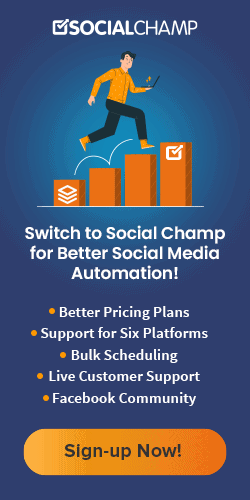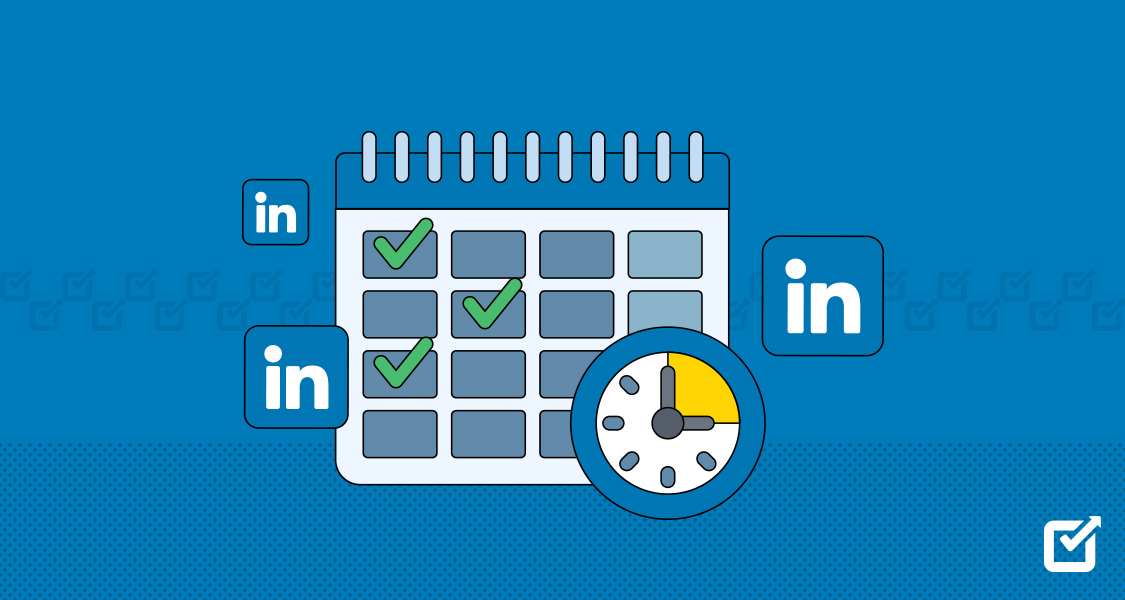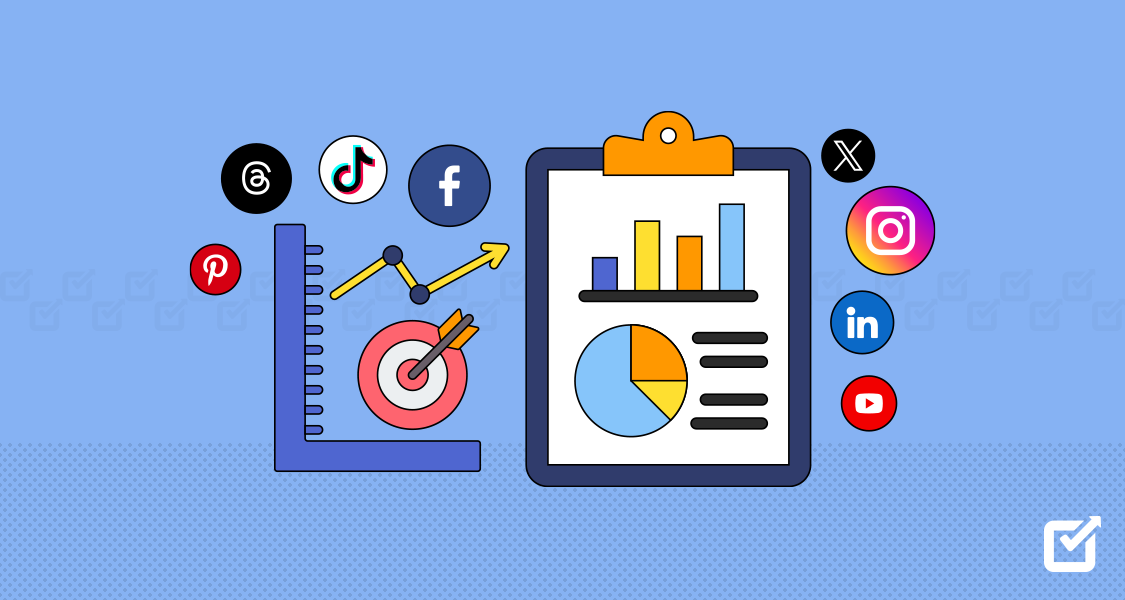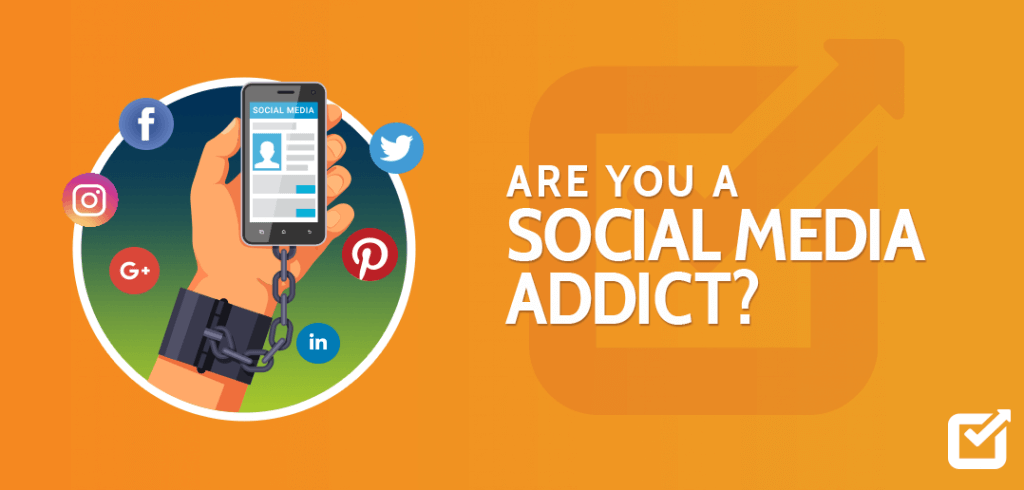Are you struggling to get your content seen by the right audience? In today’s age, creating quality content is only half the battle. The other half is ensuring that it reaches your target audience through effective distribution strategies.
Content distribution is a critical component of any successful marketing strategy. To stay ahead of the competition and ensure your content gets the visibility it deserves, it’s essential to have a solid content distribution plan in place.
But before we take a look at content distribution, here’s a little tip: if you’re publishing content on multiple social media platforms, leverage tools like Social Champ. This tool can help you schedule, publish, and monitor content on up to nine platforms.
Now, let’s go back to the ultimate guide on the most effective content distribution tactics to help you reach your target audience and achieve your marketing goals in 2024 and beyond.
What is Content Distribution?
Content distribution refers to the process of disseminating and promoting content to your target audience via a variety of channels.
This concept is all about getting your thoughts and ideas to the people who might be interested. You do this by sharing and promoting your content differently and on other platforms, like your website, ads, social media, emails, and more.
Since there’s so much content, just creating it isn’t enough anymore. Content distribution helps ensure your content gets noticed and reaches the right people at the right times, using various channels.
Boost your content reach with ease!
Social Champ helps you optimize your posts, analyze performance, and engage with your audience – all in one place.
Content Distribution Channels
There are several channels for content distribution, including social media platforms forums, and communities.
Social Media Platforms
Here are some popular social platforms that you can use for content distribution. Each platform has a distinct type of content, so familiarize yourself with each platform before planning your content.
Facebook
Facebook, with its massive and diverse user base exceeding 3 billion, presents a prime opportunity for content distribution. This platform allows creators to tailor their approach by offering a variety of content formats, including text, images, short and long-form videos, and even live streams.
Reaching your target audience is further facilitated by diverse channels like personal profiles, business pages, event groups, and community groups. Additionally, Facebook’s algorithm prioritizes user engagement, allowing you to effectively target your ideal audience and maximize the reach of your content.
Instagram
Instagram shines as a content distribution platform specifically targeting a younger demographic, primarily 13 to 24-year-olds or those under 30. This platform thrives on visually appealing content, making it ideal for industries like fashion, lifestyle, modeling, food, creative fields, music, and modern technology.
Its diverse content formats cater to various preferences, including photos, short videos, ephemeral stories, IGTV (longer-form videos), captivating Reels, and even live streams. This variety allows creators to engage audiences in dynamic ways, keeping them interested and coming back for more.
Twitter
Twitter carves a unique niche in the content distribution landscape, blending the professional with the personal. It caters to both influencers and everyday users, fostering a vibrant mix of perspectives.
This platform thrives on its “micro-blogging” nature, restricting posts to a concise 280 characters per tweet. This focus on brevity encourages highly interactive content, making it ideal for audiences seeking real-time updates, news snippets, and quick introductions. The dynamic nature of Twitter fosters discussions and allows creators to engage directly with their audience, building a strong sense of community.
LinkedIn
LinkedIn isn’t just for job hunting! It’s also a great place to share your ideas and expertise. You can reach people in your field by focusing on their interests and jobs. Sharing articles, videos, or even live chats can help you become known as an expert. Plus, you can connect with others who share your interests, which can lead to new opportunities!
TikTok
While primarily targeting teenagers and young adults, TikTok has become a powerful platform for content distribution. Its short-form, music-driven videos, and viral trends captivate audiences, presenting a unique opportunity for creators and businesses alike.
While the core audience leans young, brands are finding success by adapting their content. ON TikTok, you can go beyond dance challenges: share behind-the-scenes glimpses, product demonstrations, and educational tutorials, all tailored to TikTok’s fast-paced format. The key lies in authenticity, creativity, and understanding of what resonates with this vibrant community.
YouTube
YouTube is a popular internet platform with users of all ages. It is a video-sharing network where many individuals submit several films, ranging from very short movies expressing their experiences to pervasive videos of various professors teaching various topics.
The vast user base of YouTube welcomes content across all spectrums. With engaging formats like product reviews, comedic skits, or even animated explainers, YouTube empowers creators to tell their stories, share their knowledge, and connect with a global community.
Pinterest
Pinterest is also famous for those who are looking for inspiration basically in arts, home decoration, fashion, DIY projects, lifestyle clothing, style, jewelry, accessory wear, and several different kinds of help. It is a visual discovery platform where you can create different boards to save organized images or simply pins related to your interests.
Related Article: Facebook Algorithm: Tips for Getting Your Content Noticed in 2025
Forums and Communities
There are several benefits of posting on forums and communities. Digital communities get a lot of audience participation, allowing you to share your content with individuals who are interested in the niche. Let’s take a look at some forums you can leverage for audience distribution.
Reddit
Reddit is like a giant online message board with different groups for different interests. Instead of just posting your stuff everywhere, you can share it in groups (called subreddits) where people are already talking about similar things. This way, people who are actually interested will see your content. But remember, Redditors don’t like people just trying to sell things, so focus on being helpful and joining the conversation.

A snapshot of content distribution on Reddit by Lenovo Quora
Quora is like a giant question-and-answer board. People ask questions about all sorts of things, and anyone can answer them. If you know something about a topic, you can answer someone’s question and share your knowledge. This is a great way to get your ideas out there and reach people who are already interested in what you have to say. Just remember to be helpful and provide good quality answers so people will trust your information.
Discord
Discord is a free voice, video, and text chat app that fosters communities around shared interests. Consider this platform your digital hangout spot, where you can chat with friends, meet new people, and geek out about your hobbies.
It allows you to connect with like-minded people within different channels dedicated to specific topics. Whether you’re into gaming, music or just want to find your tribe, Discord lets you connect, share your passions, and create lasting friendships.
Websites, Blogs and Newsletters
It is crucial to understand industry-specific websites, blogs, and newspapers, which are very important aspects of content distribution.
Identifying your audience preferences, targeting your specific audience based on industry-related information, and identifying a website in the blog.
There should be a strategic partnership between influential website and blog writers to expand your growth on social media platforms.
Audio-Video Content Engagement And Distribution
Platforms like Vimeo, YouTube, and podcast directories have become popular destinations for consuming information because they offer a vast library of content in engaging formats. Whether you’re explaining complex topics, sharing creative storytelling, or offering insightful commentary, these platforms allow you to connect with audiences in an accessible and enjoyable way.
These platforms excel at delivering information in bite-sized chunks, making them ideal for audiences seeking easily digestible content. Whether it’s a quick instructional video, a thought-provoking podcast episode, or a visually captivating documentary, these platforms cater to various learning styles and preferences. By leveraging these formats, you can effectively share your knowledge, entertain your audience, and ultimately achieve your content distribution goals.
Why Is Content Distribution Important?
Content distribution is important for several reasons, including the following:
Improve Visibility and Reach
Multiple media platforms make information available to a larger audience, increasing its visibility and reach. Additionally, it fosters brand recognition and credibility through consistent presence across various channels.
Understanding Audience
Distributing content on platforms where your target audience is engaged helps you connect with the appropriate demographic and improve your content distribution strategies for optimal impact.
Brand Awareness and Identification
Content distribution will help you generate brand awareness because the more you share your information, the more familiar your brand will become in the minds of your customers.
Enhance SEO and Search Rankings
Sharing your content consistently will increase the chances of backlinks, social signals, and overall engagement, improving search engine rankings.
Communicating With Audience
Sharing content consistently will help you to interact with your audience. You will be able to communicate with your audience through your content comments, comments, and shares. This way, you can create a community around your brand.
Understanding Your Audience Choices
By sharing content, you will understand which platform your audience prefers. For instance, you’ll know whether they like visuals on Instagram or like to read long blogs on LinkedIn.
Chances of Virality
When your audience likes your content, they share it in their network, and this way, your content can go viral.
Seeking Attention
There is a lot of competition in the market, so grabbing audience attention requires staying present where your competitor is not.
Related Article: Mastering the Art of Content Creation and Marketing with Fey Arberk Bozoglu
Tips to Improve Content Quality and Distribution
The following are the tips to improve content quality and distribution:
Create Quality Content
Produce valuable, captivating content that piques readers’ interest or solves a problem to create shareable content. To create visually appealing content, use photographs, infographics, videos, links, and detailed comprehension passages of your topic.
For content distribution, you can use interactive components, calls-to-action, and social media buttons to promote sharing. Your audience is likelier to share material that amuses, informs, or solves problems with their networks, which naturally broadens your reach.
Utilize Email Marketing
Incorporate email marketing as a powerful tool for content distribution. Build a well-segmented email list, categorizing subscribers based on demographics, preferences, or behaviors. Tailor your content distribution strategy by sending targeted messages to specific segments.
Email marketing is a perfect way to improve content distribution if you are about to create and distribute your content. You can create engaging subject lines that capture the recipients’ attention. You must also implement effective email marketing that enhances the content and provides a more personalized and meaningful connection with your audience.
Podcasting and Video Creation
Podcast and video content creation offer a powerful way to reach diverse audiences. Platforms like YouTube, Spotify, and podcast directories allow you to share your content and personally connect with viewers and listeners.
This strategy leverages the growing popularity of audio and visual formats, providing engaging and easily digestible content. By tapping into these dynamic and ever-evolving platforms, you can maximize your content visibility and connect with a broader audience.

A snapshot of a podcast by Sephora for content distribution SEO
Search engine optimization (SEO) acts as a valuable tool for boosting your content’s reach. Through keyword research, you can identify relevant phrases and tailor your content to attract natural distribution by search engines.
This involves creating high-quality content that others find valuable enough to link to organically. These backlinks, essentially votes of trust from external websites, signal to search engines that your content is informative and trustworthy, ultimately increasing its ranking in search results. In simpler terms, SEO helps you create content so valuable that others naturally want to share it, leading to organic distribution.
- Create dedicated spaces on platforms like Facebook, LinkedIn, and relevant niche discussion boards.
- Share your opinions, answer questions, and actively participate in discussions. This humanizes your brand and shows its genuine interest in connecting with people.
- Encourage and showcase reviews, testimonials, artwork, and other contributions from your audience. This fosters a sense of belonging and encourages further participation.
Community Building
Cultivating a vibrant brand community delivers a wealth of benefits for your content. Firstly, fostering a sense of belonging and connection increases customer loyalty. When individuals feel heard, valued, and part of something bigger, they’re more likely to remain loyal to your brand.
Secondly, this engaged community transforms into a powerful word-of-mouth engine. By sharing positive experiences and recommendations, members organically advocate for your content, spreading the word far and wide.
Finally, a thriving community fosters a collaborative environment where members can offer peer-to-peer support and address issues collectively, further enhancing the overall experience for everyone involved. Building a strong brand community fosters loyalty and creates natural advocates for your content. Here’s how:
- Create dedicated spaces on platforms like Facebook, LinkedIn, and relevant niche discussion boards.
- Share your opinions, answer questions, and actively participate in discussions. This humanizes your brand and shows its genuine interest in connecting with people.
- Encourage and showcase reviews, testimonials, artwork, and other contributions from your audience. This fosters a sense of belonging and encourages further participation.
Emerging Communities
To stay ahead of the curve in content distribution, be proactive in exploring new platforms. Keep your finger on the pulse by staying updated about market trends, emerging apps, and cutting-edge technology.
This allows you to be an early adopter, gaining a competitive advantage by establishing a presence on exciting new platforms before they become saturated. Don’t forget to adapt your content creation techniques to cater to your audience’s evolving preferences. This combination of exploring new avenues and tailoring your content keeps you relevant and ensures your message reaches the right people in the right places.
Cross-Promotion and Partnering
Increase your brand’s visibility by partnering with like-minded groups and walking move-promotions. Work together on campaigns that do not directly compete and gain both parties.
By working together, you could attain more viewers and create a win-win situation. Combined events and co-created content material are examples of coordinated marketing techniques. Ensure that both fan agencies will understand your communication and shared values and promote harmonious cooperation.
Collab With Influencers
Join forces with influential people in your subject to establish significant relationships. Choose influencers whose fan base is similar to the people in your target market.
By doing this, you could take advantage of the public’s acceptance as a true influencer and reach a larger target market.
Working with influencers is one of the acceptable methods to speak with your audience and promote your message.

A snapshot of a brand partnering with an influencer for content distribution
In Conclusion
This text is a guide to content distribution in digital marketing. It explains that content distribution is disseminating and promoting content to the target audience via different channels. Demographics play a significant role in understanding the audience, including age, location, and behavior.
These platforms include Facebook, Instagram, Twitter, LinkedIn, TikTok, YouTube, and Pinterest. Each platform has its importance, which makes it right for its audience.

















